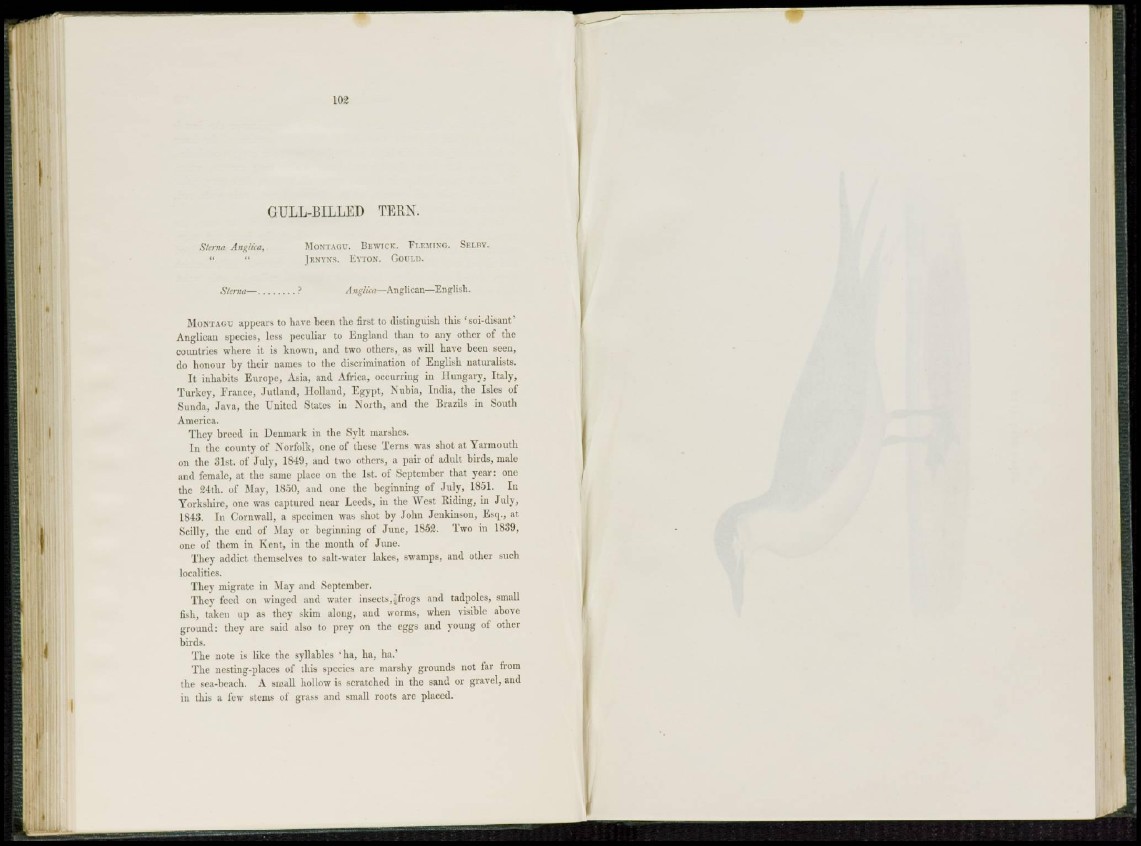
GULL-BILLED TERN.
Sterna Anglica, MONTAGU. BEWICK. FLEMING. SlLBT.
" " JENYNS. EYTON. GOULD.
Sterna— ? AngHca—Anglican—English.
MONTAGU appeals to have been the first to distinguish this 'soi-disant'
Anglican species, less peculiar to England than to any other of the
countries where it is known, and two others, as will have been seen,
do honour by their names to the discrimination of English naturalists.
I t inhabits Europe, Asia, and Africa, occurring in Hungary, Italy,
Turkey, France, Jutland, Holland, Egypt, Nubia, India, the Isles of
Sunda, Java, the United States in North, and the Brazils in South
America.
They breed in Denmark in the Sylt marshes.
In the county of Norfolk, one of these Terns was shot at Yarmouth
on the 3 1 s t of July, 1819, and two others, a pair of adult birds, male
and female, at the same place on the 1st. of September that year: one
the 24th. of May, 1850, and one the beginning of July, 1851. In
Yorkshire, one was captured near Leeds, in the West Riding, in July,
1843. In Cornwall, a specimen was shot by John Jeukmson, Esq., at
Scilly, the end of May or beginning of J u n e , 1852. Two in 1839,
one of them in Kent, in the month of June.
They addict themselves to salt-water lakes, swamps, and other such
localities.
They migrate in May and September.
They feed on winged and water insects,"frogs and tadpoles, small
fith, taken up as they skim along, and worms, when visible above
ground: they arc said also to prey on the eggs and young of other
birds.
The note is like the syllables "ha, ha. ha.;
The nesting-places of this species are marshy grounds not far from
the sea-beach. A small hollow is scratched in the sand or gravel, and
in this a few stems of grass and small roots are placed.